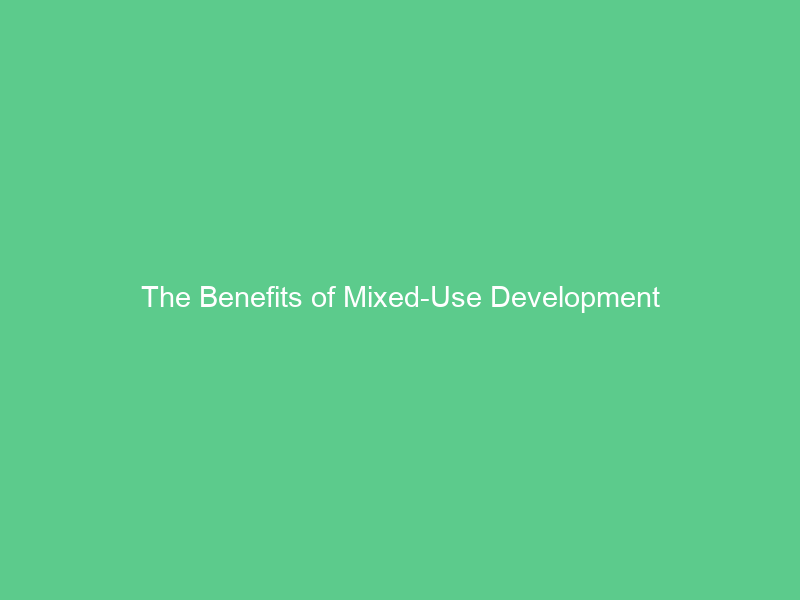Mixed-use development is an emerging trend in urban planning. This type of development includes residential, retail, office and cultural space within one building or an entire neighborhood.
Mixed use developments can play an essential role in community and economic development; however, when done improperly they can increase costs and alter timelines significantly.
Residential
Tenants with diverse lifestyles and business support needs can create a sense of community around mixed-use developments, while offsetting costs associated with these properties and increasing demand.
This approach can be more cost-effective than traditional suburban development and encourage growth in areas that best suit its purposes. Furthermore, this allows residents to spend more time outdoors while decreasing the need for automobile travel – thus decreasing pollution and congestion levels.
Residential mixed-use developments can provide affordable housing to low-income families while creating jobs and drawing in businesses to a region. By increasing property tax collections that can then be reinvested back into local economies, mixed use developments offer great potential to spur the economy while simultaneously offering new investment opportunities within communities.
Commercial
Commercial land uses that provide multiple uses, from shopping centers and office parks to industrial properties and industrial zones, are key in creating a more robust economy by drawing business investments and supporting job growth in communities – helping reduce poverty levels while creating economic equity.
Communities often need to review zoning regulations, subdivision regulations, development codes and any other regulatory barriers that restrict mixed-use development (Nelson 2012). Maintaining compliance documents helps streamline this process for developers while assuring their projects meet building, environmental and other standards.
Education residents about the advantages of mixed-use development is essential to building community acceptance and support for such projects. This can be accomplished by engaging community members and organizations, creating opportunities for equitable outreach efforts, and disbursing benefits evenly among community members (Chesapeake 2007). Furthermore, communities can offer incentives such as expedited permit review or reduced development fees to encourage developers to incorporate mixed-use elements in their projects.
Retail
People often think of mixed-use properties as buildings featuring retail shops on the ground floor and apartments above, but this is only one option available to investors.
Mixed-use developments offer investors numerous advantages. Their variety of properties attracts tenants with diverse preferences, helping to reduce vacancy rates while guaranteeing steady revenues streams.
Reducing environmental and social costs by creating sustainable communities. Many homebuyers today prefer walkable communities where their shopping and lifestyle needs can be fulfilled without needing their car for transportation; live-work mixed-use developments provide residential units close to commercial spaces in this way – stimulating entrepreneurship while supporting small businesses.
Common Spaces
Design of public spaces within mixed-use developments is crucial in order to foster community engagement and interaction. Carefully planned common areas like parks, plazas and courtyards create vibrant social fabric while simultaneously increasing overall appeal of the development.
Mixed-use developments foster environmental sustainability by decreasing commuters’ need to drive and encouraging the use of public transit systems, while expanding the potential pool of residents and tenants ensuring long-term viability.
To successfully build mixed-use projects, architects and civil engineers must be aware of how various functions can be integrated into the design. They also must consider factors like zoning regulations, transportation access requirements and infrastructure needs when developing these spaces. Navigating these complex factors may prove challenging; but with thoughtful planning and adaptability developers can create dynamic spaces that add real value to local communities.
Transportation
TOMUD projects’ proximity to public transportation stations promotes walkability and reduce automobile dependence. Furthermore, their combination of residential and commercial spaces creates an eco-system which supports small businesses while helping them thrive.
Some projects might involve horizontal mixed-use development with office space on the first floor and apartments or condominium units on upper floors – this is known as “horizontal” mixed-use development.
Developers and real estate investors often prefer mixed use developments as they provide commercial spaces with built-in clientele that generate recurring revenue for tenants while increasing the overall property value.

